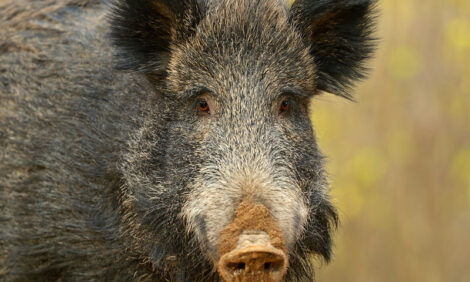Pork product prices continued to weaken this week
US Weekly Hog Outlook, 3rd July 2003 - Weekly review of the US hog industry, written by Glen Grimes and Ron Plain.
|
Need a Product or service?
|
|

Ron Plain |
The farrowing intentions in the June Hogs and Pigs report for the June-August and September-November quarters show a very healthy productivity growth if they come true. In the last 16 quarters ending May 31, 2003, the farrowing intentions have overestimated the actual farrowings by 0.6 percent. Even if these intentions are too high by 0.6 percent, we will have a productivity growth of over 2 percent in litters per animal in the breeding herd for the 6-month period.
Add to this the potential for a larger litter size as well as heavier market weights and we may have a productivity growth between 3 and 4 percent for this 6-month period.
This information reinforces the need to continue reducing the breeding herd, for at least the next year, at the rate of the past 12 months which was over 4 percent. We do not believe the probabilities are very high to get the breeding herd down another 4 percent by June of 2004.
Productivity growth for the 12 months ending May 31, 2003 was less than 1 percent, but for the 4 years ending May 31, 2002 the average productivity growth was 3.2 percent each year and 1 year was over 5 percent so a productivity growth of 4-5 percent during the next year is certainly possible.
The reduction in the breeding herd varied substantially by state for June 1. Four states showed some growth --- Minnesota up 2 percent, Oklahoma up 9 percent, South Dakota up 4 percent and Texas up 5 percent. Four states showed double-digit declines --- Arkansas down 25 percent, Colorado down 20 percent, Missouri down 11 percent and Wisconsin down 15 percent. North Carolina and Kansas showed no change from a year earlier and the remainder of the top 17 states were down, but less than 10 percent. The breeding herd in Iowa on June 1 was down 8 percent, but the total herd was down only 1 percent.
The potential increases in productivity growth during the next year is casting a shadow on hog prices for 2004. If productivity growth develops at 3 percent or more, the probabilities are high that hog prices for negotiated base prices will average less than $40 per cwt live or $54 in the carcass for 2004.
Pork product prices continued to weaken this week and hog supplies were adequate to meet packers demand for the holiday shortened week; therefore, live hog prices were pushed back into the 30's at several markets on Thursday.
Loin prices are back close to $1.00 per pound. In fact, belly prices were higher than loin prices for a portion of the week.
We are concerned about the demand for pork at the consumer level. However, it is not possible to get a good reading on pork demand at the present time. The BSE problem in Canada may be resulting in substantially larger quantities of pork coming from Canada than in past months.
Loin prices ended the week at $109 per cwt for 1/4" trim loins. This is down $0.15 per cwt from Friday of last week. Boston butts at $77 per cwt were also down by $23 per cwt from the end of last week. 17-20# hams at $51.14 per cwt this Thursday compared to $49.50 last Friday. Belly prices were up a little this week at $103 per cwt at noon Thursday.
The top prices for live hogs Thursday morning at select markets were: Peoria $41, St. Paul $40, Sioux Falls N.A. and interior Missouri $40.
Slaughter for the holiday-shortened week was estimated at 1464 thousand head under Federal Inspection. This was down 0.4 percent compared to a year earlier. This is without Saturday slaughter for this week which will probably be small.


















